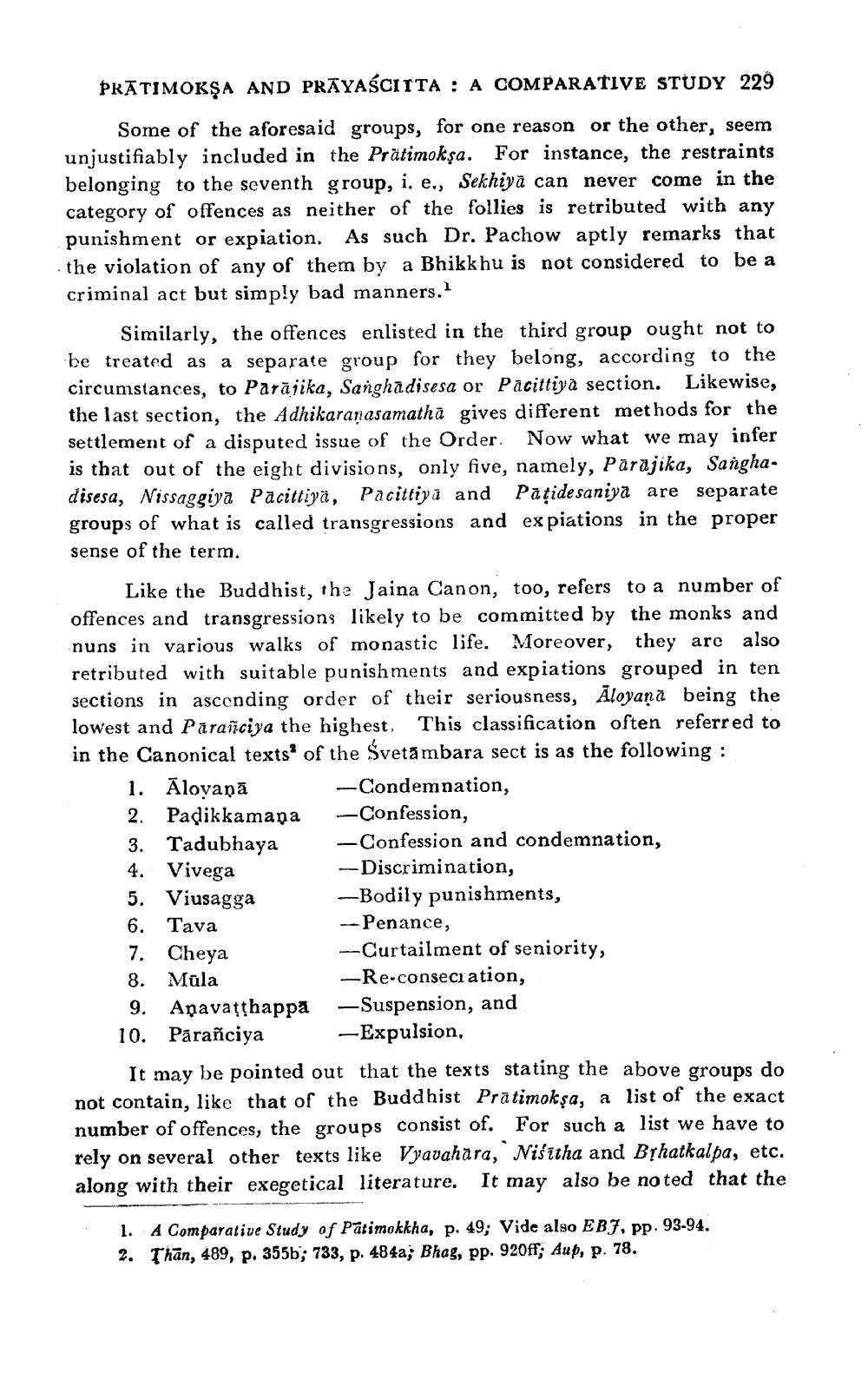________________
PRĀTIMOKŞA AND PRĀYAŚCIITA : A COMPARATIVE STUDY 229
Some of the aforesaid groups, for one reason or the other, seem unjustifiably included in the Prätimokşa. For instance, the restraints belonging to the seventh group, i, e., Sekhiyā can never come in the category of offences as neither of the follies is retributed with any punishment or expiation. As such Dr. Pachow aptly remarks that the violation of any of them by a Bhikkhu is not considered to be a criminal act but simply bad manners."
Similarly, the offences enlisted in the third group ought not to be treated as a separate group for they belong, according to the circumstances, to Parājika, Sanghadisesa or Pacittiya section. Likewise, the last section, the Adhikaranasamathā gives different methods for the settlement of a disputed issue of the Order. Now what we may infer is that out of the eight divisions, only five, namely, Päräjika, Sanghadisesa, Nissaggiya Pacittivä, Pacittiyū and Pāțide saniya are separate groups of what is called transgressions and expiations in the proper sense of the term.
Like the Buddhist, the Jaina Canon, too, refers to a number of offences and transgressions likely to be committed by the monks and nuns in various walks of monastic life. Moreover, they are also retributed with suitable punishments and expiations grouped in ten sections in ascending order of their seriousness, Aloyanā being the lowest and Parañciya the highest This classification often referred to in the Canonical texts of the Svetambara sect is as the following :
1. Aloyaņā -Condemnation, 2. Padikkamapa -Confession, 3. Tadubhaya - Confession and condemnation, 4. Vivega
--Discrimination, 5. Viusagga
-Bodily punishments, 6. Tava
-- Penance, 7. Cheya
--Curtailment of seniority, 8. Mūla
-Re-conseciation, 9. Apavatthappa -Suspension, and 10. Pärañciya -Expulsion,
It may be pointed out that the texts stating the above groups do not contain, like that of the Buddhist Prātimokşa, a list of the exact number of offences, the groups consist of. For such a list we have to rely on several other texts like Vyavahara, Niśítha and BỊhatkalpa, etc. along with their exegetical literature. It may also be noted that the
1. A Comparative Study of Patimokkha, p. 49; Vide also EB), pp. 93-94. 2. Thān, 489, p. 355b; 733, p. 484a; Bhag, pp. 920ff; Aup, p. 78.




